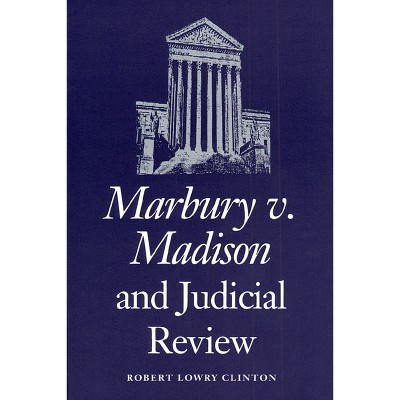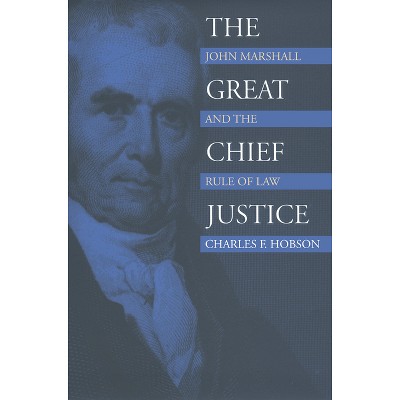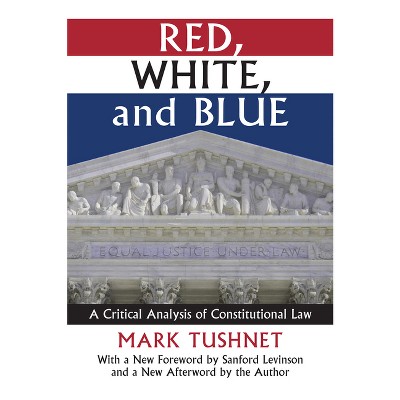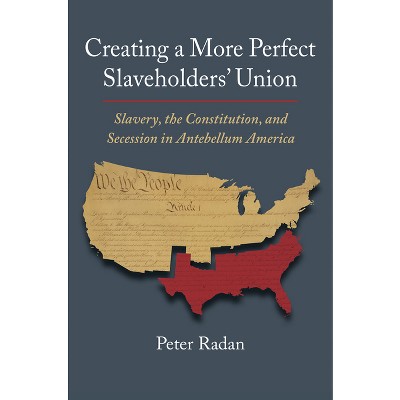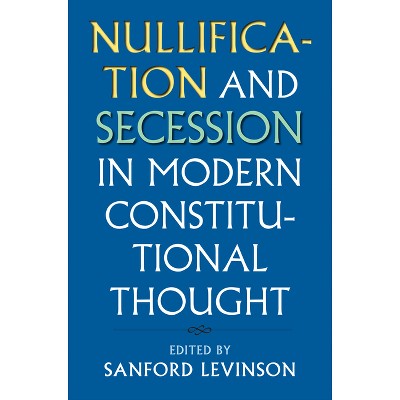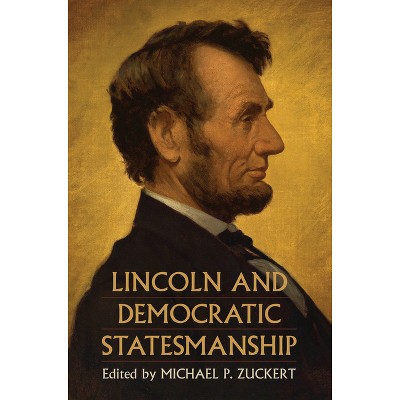Sponsored

The Constitution of Conflict - (Constitutional Thinking) by Thomas Bell (Hardcover)
In Stock
Sponsored
About this item
Highlights
- A bold and timely proposal for rethinking the role of the Supreme Court in the separation of powers.There is a widespread sense today that the separation-of-powers system is broken or dysfunctional and has become an obstacle to effective government.
- Author(s): Thomas Bell
- 304 Pages
- Freedom + Security / Law Enforcement, Constitutional
- Series Name: Constitutional Thinking
Description
About the Book
"A bold and timely proposal for rethinking the role of the Supreme Court in the separation of powers.There is a widespread sense today that the separation-of-powers system is broken or dysfunctional and has become an obstacle to effective government. The Constitution of Conflict demonstrates that much of the problem comes from attempts to find legal answers to political problems. Challenging long-held assumptions about the Constitution, Thomas Rives Bell boldly argues that a separation-of-powers doctrine enforceable by the Court is inconsistent with the constitutional design. Rather than establishing a legal doctrine, the Constitution set into motion a dynamic political system that governs through conflict within and among differentiated institutional structures.Bell shows that Congress and the president have previously found constitutional solutions to issues like the administrative state, only to be thwarted by the Supreme Court. He critiques the Court's different methodologies for resolving these disputes, demonstrating that, rhetoric aside, both originalist accounts and functionalist understandings seek primarily to enforce the separation of powers for its own sake rather than understanding the political system as the proper means by which to achieve the Constitution's aspirations. Judicial superintendence of the separation of powers, moreover, places the Court above rather than within the constitutional framework. Bell proposes that the Court's role in such disputes should be confined to government actions that directly implicate rights rather than to the policing of interbranch boundaries between Congress and the president.Bell applies his proposed political framework to four case studies: the legislative veto, executive agreements, recess appointments, and congressional oversight and impeachment. These cases illuminate the logic and dynamic of the separation of powers, demonstrating that political conflict, rather than legal settlement, is an essential element of the constitutional design"--Book Synopsis
A bold and timely proposal for rethinking the role of the Supreme Court in the separation of powers.
There is a widespread sense today that the separation-of-powers system is broken or dysfunctional and has become an obstacle to effective government. The Constitution of Conflict demonstrates that much of the problem comes from attempts to find legal answers to political problems. Challenging long-held assumptions about the Constitution, Thomas Rives Bell boldly argues that a separation-of-powers doctrine enforceable by the Court is inconsistent with the constitutional design. Rather than establishing a legal doctrine, the Constitution set into motion a dynamic political system that governs through conflict within and among differentiated institutional structures.
Bell shows that Congress and the president have previously found constitutional solutions to issues like the administrative state, only to be thwarted by the Supreme Court. He critiques the Court's different methodologies for resolving these disputes, demonstrating that, rhetoric aside, both originalist accounts and functionalist understandings seek primarily to enforce the separation of powers for its own sake rather than understanding the political system as the proper means by which to achieve the Constitution's aspirations. Judicial superintendence of the separation of powers, moreover, places the Court above rather than within the constitutional framework. Bell proposes that the Court's role in such disputes should be confined to government actions that directly implicate rights rather than to the policing of interbranch boundaries between Congress and the president.
Bell applies his proposed political framework to four case studies: the legislative veto, executive agreements, recess appointments, and congressional oversight and impeachment. These cases illuminate the logic and dynamic of the separation of powers, demonstrating that political conflict, rather than legal settlement, is an essential element of the constitutional design.
Review Quotes
"The Constitution of Conflict is a superb book. Focusing on clashes between Congress and the president, Thomas Bell demonstrates that the separation of powers is best understood in political and not legal terms, while also illustrating that the Supreme Court's jurisprudence on this front is misinformed and misguided. Against the conventional understanding of separation of powers, which is often seen as broken, Bell offers a much-needed corrective that also gives us a deeper understanding of the Constitution as a whole."--George Thomas, The (Un)Written Constitution
"Thomas Bell's impressive new book offers a compelling political account of the American Constitution's separation-of-powers regime, backed up by detailed case studies. This account, which emphasizes institutional conflict and contingency, forms the basis for Bell's sophisticated and devastating critique of the role of the Supreme Court in contemporary American interbranch politics. This is a must-read for all scholars of American politics."--Josh Chafetz, author of Congress's Constitution: Legislative Authority and the Separation of Powers
"With clarity and force, Thomas Bell shows the profound inadequacy of existing judicial approaches to the separation of powers, and suggests that leaving the work of making sense of the separation of powers to judges is a dereliction of the constitutional responsibilities of everyone else in the system--including all of US citizens. This is a groundbreaking and important work of constitutional thought."--Yuval Levin, author of American Covenant: How the Constitution Unified Our Nation--and Could Again
"Emerging out of the separation of functions approach to the study of the Constitution, Thomas Bell's book is the first to think seriously about the role of the Supreme Court in a political Constitution. Bell shows that the law professors are mistaken when they place courts outside of the separation of powers tasked with deciding on the boundaries between the branches. He points back to the architectonic Constitution in which power arises through political conflict between the branches. As this political approach to constitutional conflict continues to emerge, this book will define the field. I plan to use this book in my classes on American politics."--Benjamin A. Kleinerman, author of The Discretionary President: The Promise and Peril of Executive Power
"The Constitution of Conflict restores the original constitution of political struggle from the imagined constitution of law that structures too much legal discourse. Thomas Bell's book details how the framers established a separation of powers that would achieve good government through conflicts between the branches of the national government rather than through fixed legal rules, a productive conflict that is threatened when one branch of government (Congress) stops engaging in contest for political power with another (the President)."--Mark A. Graber, author of Punish Treason, Reward Loyalty: The Forgotten Goals of Constitutional Reform after the Civil War
"As the US separation of powers system faces waves of severe stress tests, Thomas Rives Bell's comprehensive and convincing book arrives at the perfect time. Bell demonstrates that a revival in animating institutional values and power tools can help the polity recover constitutional health. Favoring direct inter-branch conflict, Bell challenges the assumption that we should repeatedly ask the Supreme Court to devise and maintain boundaries between Congress and the President across key domestic and foreign policies."--Jasmine Farrier, author of Constitutional Dysfunction on Trial: Congressional Lawsuits and the Separation of Powers
Shipping details
Return details
Trending Non-Fiction



